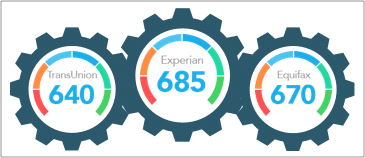A Roth IRA is an unofficial retirement plan that offers significant tax advantages and flexible disbursements after you retire.
Not everyone can use a Roth IRA. According to federal law, some individuals simply make too much money to use a Roth IRA. A backdoor Roth IRA, therefore, is a way for people who earn too much to contribute to a regular Roth IRA without breaking IRS rules.
What is a Roth IRA
A Roth IRA is a form of Individual Retirement Account that brings specific and unique tax advantages. You pay taxes on the money you put in and then withdraw the funds tax-free after your retirement.
Investment earnings on your Roth IRA can also be withdrawn tax-free as long as you draw the funds in a qualified disbursement. If the disbursement does not meet IRA qualifications you will pay tax on investment earnings. The qualifications are:
- You must be over age 59 ½, and
- You must have held the account for at least 5 years.
Traditional IRAs require a minimum annual disbursement starting at age 72. You’re not required to take mandatory disbursements from a Roth IRA, so you can hold it in reserve as long as you like and even pass it on to your heirs. You can keep contributing to a Roth IRA at any age.
What Is a Backdoor Roth IRA?
A backdoor Roth IRA is a way for people who earn more than the Roth IRA contribution limit to open an IRA. A backdoor Roth IRA is not a form of retirement account. It is a strategy that allows you to open a Roth IRA at any income level without violating IRS rules.
The basics of opening a backdoor Roth IRA are fairly simple: you open a traditional IRA, convert the account to a Roth IRA, pay some taxes, and you have a Roth IRA. You will have to follow the procedure precisely to stay within IRS rules.
What are the Income Restrictions on a Roth IRA?
The income limits for contributing to a Roth IRA change according to your filing status:
- If you file as single, as head of a household or married filing separately and not living together you can contribute the full amount allowed if your income is under $124,000 in 2020.
- If you are married filing jointly or a qualified widow(er): you can contribute the full amount allowed if your joint income is under $196,000.
- If you are married filing separately and living with your spouse at any time during the year you cannot make the full contribution to a Roth IRA.
These amounts are based on the Modified Adjusted Gross Income or MAGI. MAGI is based on the Adjusted Gross Income reported on your tax return, with any deduction for student loan interest subtracted.
How to Open a Backdoor Roth IRA
There are several steps to opening a backdoor Roth IRA:
- Open and fund a traditional IRA account, or use an existing IRA account if you have one.
- Convert your account to a Roth IRA. There are three ways to do this:
- A rollover, where you withdraw the money from your existing IRA and deposit it in the new Roth IRA within 60 days.
- A trustee-to-trustee transfer occurs when your existing IRA provider sends the money directly to the provider of your new Roth IRA.
- A same trustee transfer happens when you open your Roth IRA with the same institution that managed your old IRA. The institution transfers your money from one account to another.
- Pay your taxes. A traditional IRA receives pre-tax dollars: you pay tax on your post-retirement disbursements. A Roth IRA receives only post-tax dollars. The IRS must always get its share, so you’ll have to pay income tax on the funds you convert.
The money you transfer will be taxed according to the Pro-Rata rule. The IRS will look at all of your traditional IRA accounts combined and assess the ratio of pre-tax to post-tax funds at the end of the last tax year. That ratio will be applied to your transfer.
Once the process is complete and your taxes are paid, you hold a new Roth IRA. There are a few points to remember, though:
- You cannot convert a backdoor Roth IRA back to a traditional IRA.
- If you open a backdoor Roth IRA you must hold the account for a minimum of 5 years before taking any disbursement from it. If you withdraw money before the five years are up you will pay a 10% penalty
- The taxable portion of your conversion will be taxed as income, and it could push you into a higher tax bracket and increase your overall tax rate.
- You can only convert one traditional IRA to a Roth IRA in a single tax year.
- If your income is too high to contribute to a Roth IRA you can set up a backdoor IRA but you cannot contribute more funds to it once it is set up. You will need to convert the entire amount that you wish to hold in your backdoor Roth IRA.
You should consider these factors before you decide to set up a backdoor Roth IRA.
Why Convert to a Backdoor Roth IRA?
Converting a traditional IRA to a backdoor Roth IRA takes some work and a substantial tax payment, and the conversion cannot be reversed. You should be clear on the reasons why you want to convert to a Roth IRA.
These are the main advantages of a Roth IRA:
- No taxes on disbursement as long as you are over 59 ½ and you’ve had your account for over 5 years.
- Flexible disbursements. With a Roth IRA, there are no required minimum disbursements, so you can save the money for later in your retirement or even pass it on to your heirs.
- Early disbursements. If you need the money before you can retire, you can withdraw your contributions with no tax or penalty.
A Roth IRA is also a good choice if you want a retirement account that you can hold in reserve for later in your retirement, or even pass on to your heirs if you don’t use it. (Section source: 7)
When Should You Not Convert to a Backdoor Roth IRA?
A Roth IRA is not the right choice for everyone. There are some specific indications that conversion to a backdoor Roth IRA is not the right move for you:
- You may need the money in less than five years. A conversion to a Roth IRA means that if you withdraw funds in less than five years you will pay a 10% early withdrawal penalty.
- The tax on the conversion will push you into a higher tax bracket. If that income pushes you into a higher tax bracket, you could face higher taxes on your entire income.
- You have to pay the taxes on the transfer with money from the retirement account. You will lose any future investment gains from the money you use to pay the taxes, and if you are under 59 ½ the money from your account that you use to pay the tax will be subject to the 10% penalty.
Any of these situations can outweigh the benefits of converting a traditional IRA to a backdoor Roth IRA.
Conclusion
If you want the advantages of a Roth IRA but you earn too much to meet the contribution limits, a backdoor Roth IRA is a viable option that is within IRS regulations. It’s not a tax dodge, and you will pay tax on the money you convert. Be sure you have a clear idea of what you expect to gain from the conversion before you make the decision to open a backdoor Roth IRA.
Disclaimer: The Content is for informational purposes only, you should not construe any such information or other material as legal, tax, investment, financial, or other advice.




